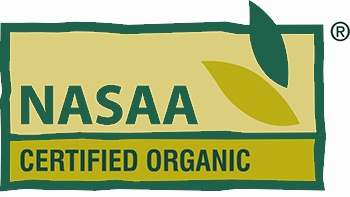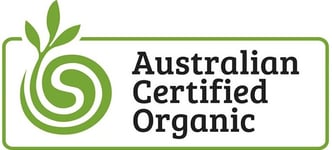How To Get Your Coffee Business Organic Certified
Getting organic certified comes with a lot of advantages and can help put you at the forefront of the competitive coffee industry. Here are the steps involved in earning certification labels.

As consumers continue to question the origins and health benefits of the products they choose to buy we are also seeing an increase in businesses choosing to become organic certified. We know that it can be a confusing and daunting process so here are a few helpful tips and insights to help you on your way.
1. CHECK YOUR FARMING PRACTICES
To qualify for organic certification, your products must be produced in the most natural way possible. This means shade grown or cultivated under larger plants. Coffee crops that are not shade grown and are over exposed to the sun are said to require more water, chemicals, and fertilizers and according to the Australian Consumer and Competition Act, products that are labeled as “organic” cannot contain GMOs, chemicals, or synthetic additives. They also need to be animal-friendly.
2. GET THE RIGHT CERTIFICATIONS
One sure way to prove your status is by becoming certified with these two leading bodies in Australia:
1. National Association for Sustainable Agriculture, Australia (NASAA)
2. Australian Certified Organic (ACO)
The National Association for Sustainable Agriculture, Australia
NASAA is dedicated to developing the country’s organic industry and assisting operators when earning organic certification. They promote the production of organic food in a sustainable way - through water conservation, soil regeneration, animal welfare, and minimising the possible negative impacts. Their certification practices include:
- promoting biodiversity by growing a variety of crops
- preventing soil erosion and improving soil quality
- conserving energy
- protecting wildlife, stream banks and watersheds
- avoiding the use of synthetic or artificially produced pesticides, herbicides, fertilisers or GMOs (genetically modified, transgenic organisms). [NASAA]

Under the National Association for Sustainable Agriculture, Australia is the NASAA Certified Organic or NCO which provides the certification services. The NCO certification is widely known as the benchmark for organic operators so carrying it will help you guarantee your brand’s integrity and verify your sustainable practices. There are five steps to gaining the NCO certification:
STEP 1: Call NCO and they will walk you through the entire process and explain the conversion requirements.
STEP 2: Read the NASAA Organic and Biodynamic Standard before you proceed with your application.
STEP 3: Complete the application form/s. There’s a specific form for producers and for processors/handlers.
STEP 4: Get your organic management plan ready. This plan includes what you are currently doing and what you plan to do in the future in order to meet the NASAA standard.
STEP 5: Submit your completed documents to info@nasaa.com.au.
The NCO certification team will then review your application and will get back to you within 28 days.
2. Australian Certified Organic or ACO
ACO is the country’s main certifier for organic and biodynamic produce. Their job is to also audit the businesses that claim their products are organic and provide them with a sustainable logo that certifies that their brand is truly environmentally-friendly.
Just like NASAA’S, the Australian Certified Organic’s çertification process is quite thorough and it normally takes a year or more before you can actually display their logo on your products.

ACO’s logo is the popular ‘bud’ symbol. As the organisation says:
“The BUD represents everything that Australian organics is about – the growth and promise of spring, the sign of big things growing from the initial organic movement, and the strength and logic of nature and natural (biological and organic) systems in guiding our choices in life.”
Below is ACO’s process for getting organic certification for primary production:
- Application kit is requested / completed and returned to ACO with application payment and supporting documents.
- Application and documents are reviewed for completeness and compliance. Missing information is requested after this review.
- After successful document review, an on-site audit is organised to validate all declared information.
- Audit is executed and soil test samples are taken (invoiced to operator).
- Audit report is submitted by Inspector to ACO for review.
- ACO reviews report to determine whether compliance is met. If operator can demonstrate the land has been handled in compliance for at least 12 months, the property will enter In-Conversion status and remain there until over length of compliance reaches 36 months at which point the property will be upgraded to Organic status..
- If successful, the certificate is issued. If unsuccessful, official notice of items which are to be addressed is issued. Once non-conformances are addressed, certification can be finalised. [Australian Certified Organic]
You can apply to become certified organic here.
Getting organic certified comes with a lot of advantages for your business and it can help put you at the forefront of the competitive coffee industry. It also means that you are making a conscious business decision to produce only the most sustainable and ethical coffee products, which is in turn meeting a huge and growing need for your customers.
Categories
Advice
Our insights team is made up of passionate writers, researchers, chefs, baristas, web developers, tech gurus, our Founders, and even an accountant. We keep a pulse on the Food & Beverage industry to bring you insights and research to help our industry trade smarter.



.jpg?width=352&name=Luxe_Justin-026%20(1).jpg)



